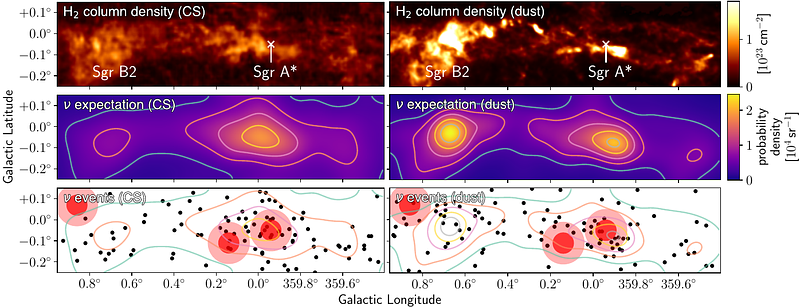Neutrinos as a new tool to characterise the Milky Way Centre

Neutrinos as a new tool to characterise the Milky Way Centre
Paul C. W. Lai, Beatrice Crudele, Matteo Agostini, Hayden P. H. Ng, Ellis R. Owen, Nishta Varma, Kinwah Wu
AbstractThe Central Molecular Zone (CMZ), a star-forming region rich in molecular clouds located within hundreds of parsecs from the centre of our Galaxy, converts gas into stars less efficient than anticipated. A key challenge in refining star-formation models is the lack of precise mapping of these dense molecular hydrogen clouds, where traditional tracers often yield inconsistent results due to environmental limitations. We demonstrate how, in the not-so-far future, neutrinos will emerge as a robust mass tracer thanks to advancements in neutrino telescopes. Since neutrinos are produced alongside gamma-rays when cosmic-rays interact with molecular clouds, they offer a complementary, systematics-independent measurement of the gas density. In an optimistic case where most gamma-ray emission from the Galactic Centre region originates from pion decays, we expect several tens of muon neutrinos to be detected in about two decades by KM3NeT, Baikal-GVD, and P-ONE combined, which will enable a better determination of the baryonic content in the Galactic Centre region. The CMZ will serve as a testbed to calibrate conventional tracers against neutrinos, ultimately improving gas measurements in distant galaxies, where neutrinos are undetectable, but traditional tracers remain available.